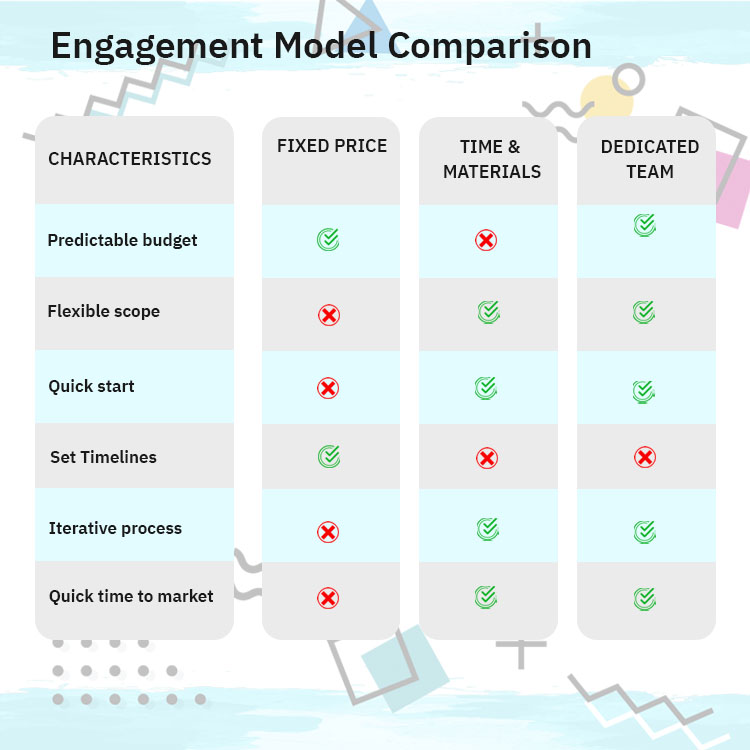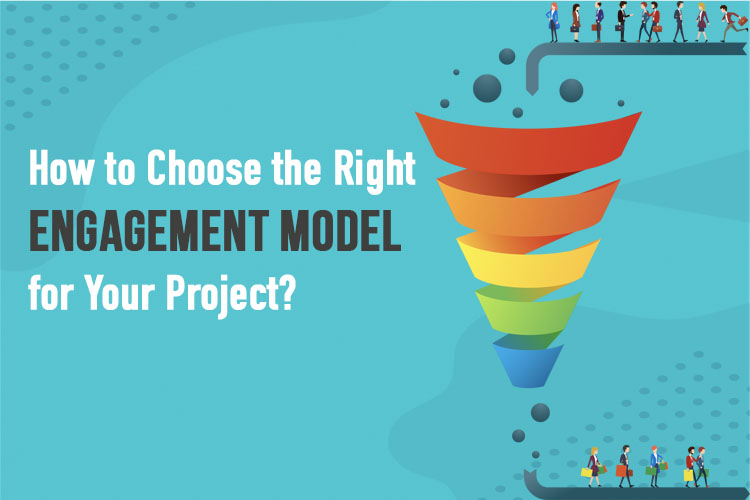The software development is quite competitive. With companies looking to build their status quo in the market, it is crucial to streamline the project specifications in order to meet their business requirements. Engagement model is one of the areas that needs attention in every software company. They need to be careful and handle the model with great understanding. Today, freelancing and outsourcing projects have become part of engagement models too. From time based, cost, in-house projects to offsite and onsite custom development, engagement model have come a long way.
According to a recent survey, the global IT outsourcing market is expected to grow at $97 Billion during 2020-24 period. Outsourcing development projects will be one of the best options, thus paving the way for easy access to a wider range of talents, better expenses control and reducing waiting times.
However, there is not a particular engagement model that can fit all the software development. Depending on your project, you need to choose the right engagement model. All of them have respective pros and cons, making them apt for specific projects.
What is an Engagement Model?
Every customer success begins with the right model.
An engagement model is more like a plan, strategy that specify how the professionals are engaging in the development process. It includes their roles and responsibilities, terms of payment, timelines, cost of project, management decisions, time-to-market, scope of project and much more. It describes the partnership of vendors and customers during the project development. The choice of model depends on various scenarios like project’s size, duration, strategy, concept, etc.
What are the Different Engagement Models?
Let’s discuss a few engagement models that are used by the industry professionals currently.
Fixed Pricing Engagement Model
A classic approach to development projects, Fixed price engagement model is still the one of the sought after engagement models in the industry. In this model, you can set the price, scope of the project, along with the deadlines and other requirements before starting the project. Here, the client pay only a predetermined amount for the project and the development team delivers within that amount.
As the name suggests, this is completely a fixed deadline, fixed requirements, fixed allocated budget and timely project management interaction with the customer, which in other means, there is absolute transparency and no unwanted surprises. With so many parameters involved, you can easily plan out your expenses and launch to a market well advance for the upcoming 1-3 months. In case the project is beyond 4 months, it is wise to consider another model.
The negative aspect of this model is that it doesn’t provide much flexibility once the project starts, as bringing any change will affect the cost of the project and can create chaos and clash of interests on both sides. Plus, there is not much interaction between the customer and the team. Some of the project decisions can be taken by the dev team on their will.
This engagement model is suitable for projects with limited budget, fixed deadlines and when you have complete clarity about your project requirements. If you are working on a small project with limited features and minimum viable project, then a fixed pricing model is the one for you!
Time and Material Engagement Model
Time and material engagement model costs you based on the time and effort of the development team that goes into the project. As a customer, you pay for the materials, hours spent by the team on the project.
This model lets you become more flexible so you can make some changes during the development process as and when required without affecting the terms of the project. Plus, it allows you to change directions, replace feature requirements, change the point of focus, revise the work and involve more team members in the midway to get the final results.
This model is very cost effective as you only pay for the time spent in developing the project and the expertise that goes into it. You can also take decisions as the project progresses dynamically, without having to worry about making big decisions beforehand.
As the modifications in the projects can cause delay, it might be difficult to maintain the budget, in some cases, it might extend the set amount. Compared to the fixed pricing model, you will have to spend more time and increase the amount of your involvement in this model.
This engagement model is best for long term projects with dynamic needs, flexibility, the scope of including more team members and when there is complete transparency between the customer and the developers throughout the project.
Your unique business requirement needs a unique solution. Let RailsFactory Experts help you discover it.
Dedicated Engagement Model
The dedicated engagement model is one of the most compatible pricing models for any long term project that involves constant changes and evolving environments. Here, you can hire dedicated developers for your project, pay them on a monthly basis for the entire duration of the project. This helps in saving the recruitment costs, and training costs of the new team members. Hiring dedicated developers gives you complete control over the project, you can dictate the direction and action plan for the project and supervise the developers closely.
Hiring the right dedicated developers also gives you access to a wide variety of talent and experience. This model has good control over use of resources and project timeline. It is more like working with in-house developers. Also, when you hire dedicated developers, there is a strong sense of attachment and loyalty for the project and the brand among the developers.
One of the cons of this engagement model is that it requires heavy involvement from the client in the creation of the activity classes, the assignment of tasks and responsibility to different members of the team as well as overall project management.

The more detailed the development project is, the more complex the engagement model will be. And, it will have long-drawn-out methods of development. It is clearly drawn out from the above scenario cases, the dedicated engagement model stands out.

